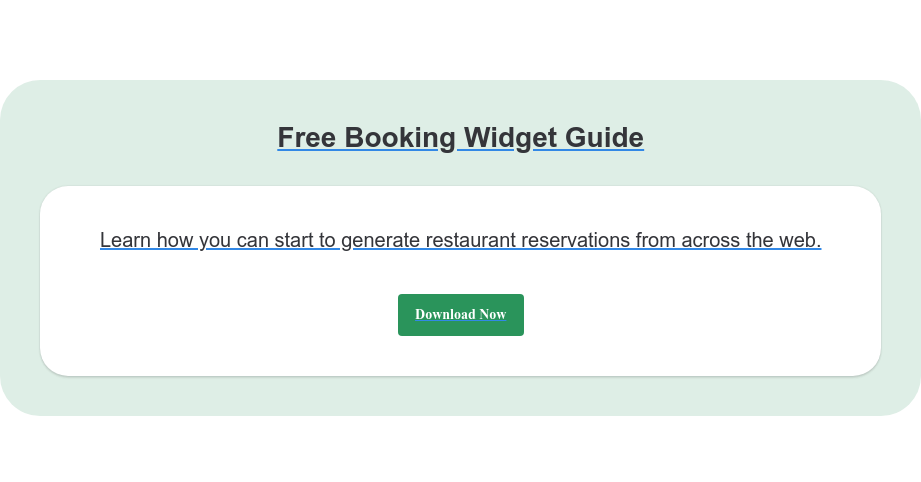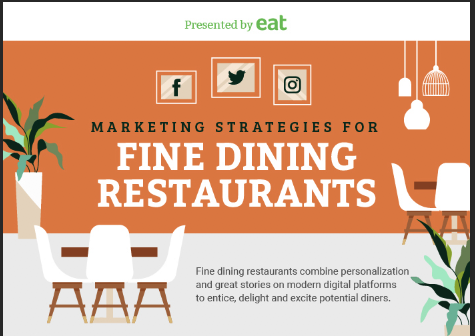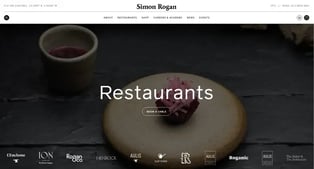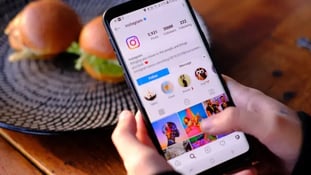For fine dining restaurants and restaurateurs, understanding how technology and social media interfaces with people's desires is more important than ever. Restaurant marketing for fine dining and full service restaurants revolves around exciting and engaging customers through digital channels.
Fine dining restaurants combine personalization and great stories on modern digital platforms to entice, delight and excite potential diners.
There are endless ways of learning about digital marketing tactics but restaurants must have a holistic understanding of how channels, usage patterns and trends in customer values link together. This is what a connected world means for restaurants looking to execute marketing campaigns at the expensive end of the market.
Increasingly, food lovers and restaurant goers are finding, booking and sharing new places to eat online. This means connecting the dots between the restaurant's brand and online channels is now one of the most important parts of fine dining restaurant marketing.
But with so many moving parts in running a restaurant, the reality is that restaurants only spend 10% of their time on marketing.
This article and accompanying infographic aims to help restaurateurs understand how software, social media, brand and promotional videos interconnect to produce a successful fine dining marketing strategy.
Download high res version of the fine dining infographic (no email required)

Trends in consumer behavior at restaurants
Consider the following statistics about fine dining restaurants.
- Since 1987 the share of consumer spending on live experiences and events relative to total U.S. consumer spending increased 70%
- 80% of Millennials want to know more about process and origins — how their food is grown and where it’s sourced.
- 81% of consumers search for restaurants through mobile apps and 75% make decisions from their search results.
- Customers expect real-time engagement with restaurants. 50% of diners expect a response in less than 1 hour.
- 72% of travelers will search for restaurants on their smartphones while on vacation.
- Millennials and generation Z spend more money eating out than any other generation, with 54% dining out at least three times a week
For fine dining restaurants it's crucial to realize a digital first approach is a must when beginning any marketing campaign. Diners are not just looking for top notch experiences but also ways to engage and share those experiences through their digital lives.
The Restaurant Marketing Framework
How do restaurants respond to the clear shift to online for today's diners? We propose a framework restaurant managers can use to kickstart their marketing initiatives. Whether it's for a new concept or to reinvigorate an existing restaurant you can use this framework to take the next step with marketing a fine dining restaurant.
The framework has two parts. The first is the technology that currently exists restaurants must leverage in their marketing. The second is the ways in which restaurants appeal to today's diners. The framework demonstrates how all these areas interconnect to produce a coherent restaurant marketing strategy.
Technology
There are 3 main technology areas restaurants should consider to maximize any marketing efforts.
- Software. This is restaurant tech that sits in-house and is controlled by the restaurant. It provides a suite of tools that help with marketing, including online reservations and CRM. For most restaurants the best solution will be a restaurant reservation system
- Website. This is your home base. A powerful brand is extremely important for fine dining restaurants and their website gives full control over the message. This is rarely possible with social media and other types of online profiles.
- Social media. The largest pool of potential customers exists on the big social media platforms. In much of the world this is Facebook, Instagram and Snapchat but this is not always case depending on location/language. Food and restaurants are some of the biggest content categories on social media and the smartphone is now a key part of how people experience food.
Marketing Techniques
Along with the tech, fine dining restaurants should tap into these marketing categories and execute them through the channels highlighted above.
- Storytelling. High end restaurants appeal to customers through telling their own compelling story but also by enabling diners to share and become part of that story.
- In restaurant experience. Dining out isn't a one-off experience anymore. Through social media it's now a never ending conversation. How are you set up to be part of this conversation?
- Customer relationships. CRM its at the heart of today's forward thinking restaurant marketing. These include personalized experiences to relevant communications through email and timely and appropriate promotions.
- Soft launches and Previews. Generating initial buzz and refining the message can be achieved through targeted soft launches and special one off previews.
Getting started with the fine dining marketing framework
Storytelling for fine dining restaurants
Telling a great story about your restaurant that is easily understood appeals to customers because stories resonate with the values of diners looking for an experience rather than just meal. Today customers look for unique experiences that connect to a larger narrative about a restaurant. Topics like the culinary journey of the head chef and origins of the food, as well as the thought process behind style and cuisines are great ways to excite guests as part of a marketing strategy.
In restaurant experience
With the rise social media and especially #foodstagram, the in restaurant experience is as much digital as it is physical. Restaurant's should be keenly aware of this take action to optimize the guest experience for sharing online.
Restaurants are increasingly incorporating design elements into the restaurants with the anticipation they will be shared online. Decor and plates designed to be photographed are now important considerations of any restaurant marketing strategy.
Customer relationship management (CRM)
In a low attention span world maintaining an high quality and responsive CRM system is an essential marketing strategy allowing restaurants to get more reservations and keep the communication flowing. The CRM system also sits at the heart of marketing strategies like email and SMS, allowing restaurants to segment their customers based on dining history and send targeted and relevant messages that get people to dine again. Learn more about CRM for restaurants.
Customer journey - seamless digital and physical experiences
Restaurants should expand their sense of what they think of as a customer journey. For consumers, digital technology and apps have removed a lot of friction from everyday tasks and set certain expectations about how easy things should be when interacting with businesses.
This is no different in the restaurant business. Guests expect to be able to go from browsing an Instagram profile or doing a Google search to having a confirmed reservation in just a few taps. Restaurants that add friction to the booking process will no doubt loose out to those who make it extremely easy. Restaurants should consider what restaurant software they are using and how it helps attract and retain more customers. This is includes booking partnerships, website widgets and booking activated social media accounts.
Soft launches and early previews
Soft launches and menu previews are useful tool on the fine dining marketing strategy toolbox. Soft launches give the restaurant the ability to control and generate early buzz through selecting the attendees of the openings and by encouraging excellent early reviews. Soft launches also give a restaurants breathing to make adjustments and to present the brand and story to an early audience to judge the response.
92% of people trust influencer reviews so getting positive coverage from these groups can really help when the official launch comes around.
Wrapping it up
Great fine dining restaurant marketing requires restaurants to have a deep understanding of how technology, values and marketing interconnect. Restaurant marketing is digital first and restaurants are setting themselves up for success with CRM and restaurant reservation software that helps find and retain new customers. Social media has infected all elements of the restaurant experience, with diners looking to become part of the conversation. Restaurants can setup their marketing to encourage existing customers to promote the restaurant themselves and rely less on strategies like advertising.











.webp?width=144&height=72&name=Eat%20App%20Logo%20(3).webp)